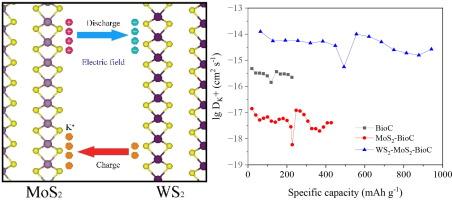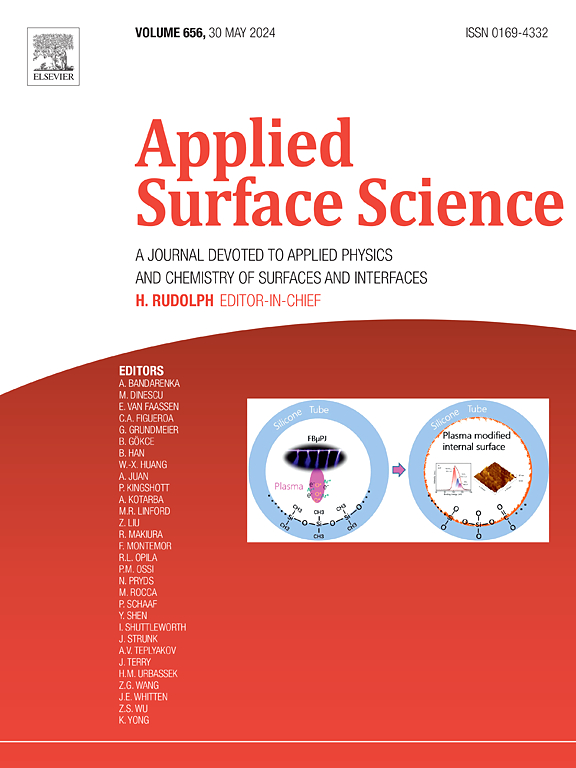WS2-MoS2-biocarbon heterostructure for high-performance potassium ion storage
IF 6.3
2区 材料科学
Q2 CHEMISTRY, PHYSICAL
引用次数: 0
Abstract
Potassium ion batteries (PIBs) have attracted increasing attention due to their inexpensive elemental potassium resources and excellent theoretical electrochemical properties. Two-dimensional metal sulfides exhibit a high specific capacity as potassium ion hosts, but the high diffusion barriers for potassium ions lead to a poor reversibility of the reaction and make the theoretical capacity difficult to achieve. Here, the sulphide MoS2 was introduced into WS2 nanosheets to construct layered WS2/MoS2 heterostructures anchored on a biogenic carbon (BioC) framework. The MoS2 in the framework served as an anchoring site to stabilise the intermediate product KxSy and to increase the WS2 layer spacing. Interfacial electric fields and potassium ion migration channels with high conversion reversibility were also formed in the layered heterostructures. The results confirmed that the reversibility of the reaction and the potassium ion diffusion rate were improved. As a result, the WS2-MoS2-BioC electrode achieves high specific capacity and diffusion rate, with a reversible specific capacity of up to 517.1 mAh g−1 at 0.1 A g−1, and a three order of magnitude improvement in potassium ion diffusion performance compared to that of MoS2-BioC. This heterostructure design strategy provides ideas for the development of metal sulphide anodes for potassium ion batteries.


用于高性能钾离子存储的 WS2-MoS2 生物碳异质结构
钾离子电池(PIB)因其廉价的钾元素资源和优异的理论电化学特性而受到越来越多的关注。二维金属硫化物作为钾离子宿主表现出较高的比容量,但钾离子的高扩散障碍导致反应的可逆性较差,使理论容量难以实现。在这里,硫化物 MoS2 被引入到 WS2 纳米片中,以构建锚定在生物碳(BioC)框架上的层状 WS2/MoS2 异质结构。框架中的 MoS2 可作为锚定点,稳定中间产物 KxSy 并增加 WS2 层间距。层状异质结构中还形成了具有高转换可逆性的界面电场和钾离子迁移通道。结果证实,反应的可逆性和钾离子扩散速率都得到了改善。因此,WS2-MoS2-BioC 电极实现了高比容量和高扩散速率,在 0.1 A g-1 的条件下,可逆比容量高达 517.1 mAh g-1,钾离子扩散性能比 MoS2-BioC 提高了三个数量级。这种异质结构设计策略为开发钾离子电池的金属硫化物阳极提供了思路。
本文章由计算机程序翻译,如有差异,请以英文原文为准。
求助全文
约1分钟内获得全文
求助全文
来源期刊

Applied Surface Science
工程技术-材料科学:膜
CiteScore
12.50
自引率
7.50%
发文量
3393
审稿时长
67 days
期刊介绍:
Applied Surface Science covers topics contributing to a better understanding of surfaces, interfaces, nanostructures and their applications. The journal is concerned with scientific research on the atomic and molecular level of material properties determined with specific surface analytical techniques and/or computational methods, as well as the processing of such structures.
 求助内容:
求助内容: 应助结果提醒方式:
应助结果提醒方式:


